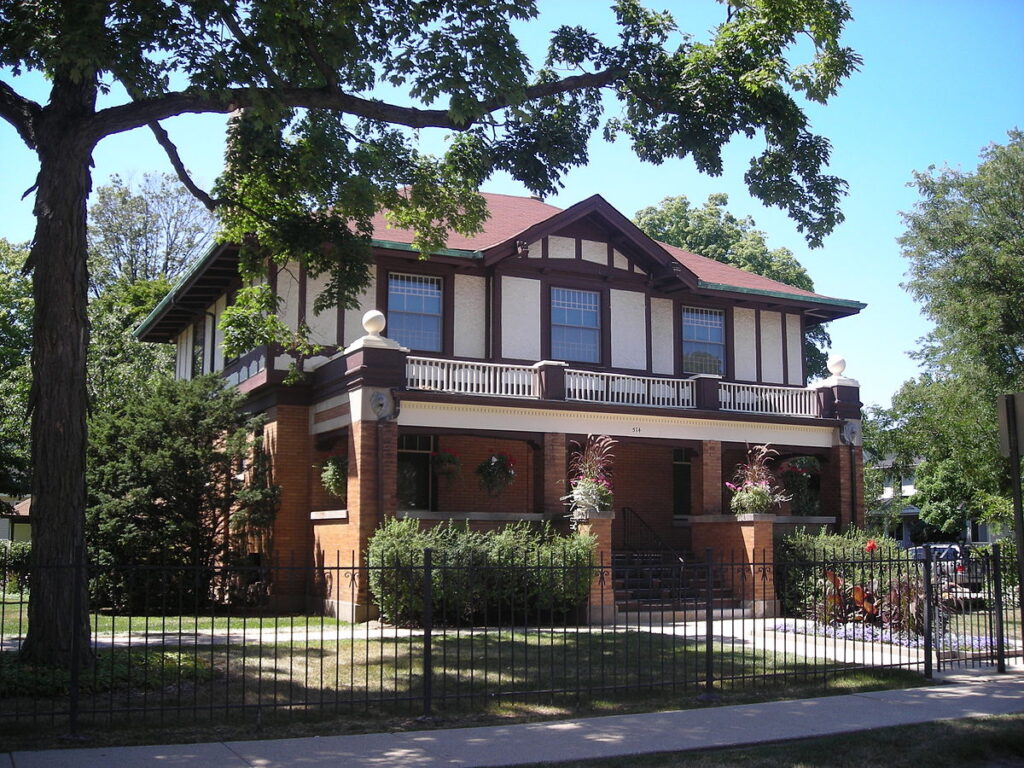
Moving to Arlington Heights, Illinois: A Comprehensive Relocation Guide
Considering moving to Arlington Heights, Illinois? This vibrant Cook County suburb offers downtown charm, excellent amenities, and convenient Chicago access. With approximately 75,000 residents in 2025, Arlington Heights combines small-city character with top schools and Northwest Chicago’s premier destination.
Demographic Profile to Consider If Moving to Arlington Heights:
Arlington Heights’ 2025 population is approximately 75,000 residents in this Cook County suburb 25 miles northwest of Chicago. The median age is around 42 years, with families, professionals, empty nesters, and retirees. The population is approximately 72% White, 13% Asian, 10% Hispanic, 3% Black or African American. Arlington Heights features a charming downtown with restaurants and shops, Arlington Park (historic horse racing venue being redeveloped), excellent residential neighborhoods, and Metra train station providing direct Chicago access. The village attracts families prioritizing schools, professionals wanting downtown character with city access, and those seeking Northwest suburbs’ quality of life. The community values downtown vitality, education, family atmosphere, and maintaining village character despite suburban scale. Find trusted local services for moving, living, and working in Arlington Heights.Arlington Heights Relocation Directory
Cost of Living to Consider If Moving to Arlington Heights:
Arlington Heights offers moderate to upper-moderate costs for Chicagoland. Median home values range from $420,000 to $580,000 in 2025, reflecting the village’s desirable schools, downtown, and location. The median household income is approximately $88,000. Rental properties average $1,600 to $2,400 monthly. Illinois’ state income tax is flat 4.95%. Property taxes are significant (typical for Cook County). Overall cost of living reflects Arlington Heights’ quality schools, amenities, and convenient location. The village attracts middle to upper-middle class families and professionals. Housing costs reflect the area’s excellent schools and downtown character. The combination of schools, downtown, and Metra access justifies pricing.
Economy and Job Market:
Arlington Heights residents typically work in Chicago or throughout the Northwest suburbs. Major local employers include Arlington Park redevelopment, Northwest Community Hospital, retail centers, and businesses throughout the village. Many residents commute to Chicago via Metra for professional employment or work at O’Hare Airport area businesses. The broader Chicagoland economy offers vast opportunities. Typical commute times to Chicago Loop via Metra are 40-50 minutes. The village’s central Northwest location provides access to multiple employment centers. Many residents work in professional services, healthcare, technology, and corporate sectors.
Education:
Township High School District 214 serves Arlington Heights students with highly-rated schools including Buffalo Grove High School, John Hersey High School, Prospect High School, Rolling Meadows High School, and Wheeling High School. Elementary districts including Arlington Heights SD 25 and others operate excellent schools. The consistently top-rated schools attract families specifically for educational quality. Harper College provides community college programs. The exceptional school system is a primary reason families relocate to Arlington Heights, creating education-focused community values.
Recreation and Lifestyle:
Arlington Heights offers a vibrant downtown along Campbell Street and Evergreen Avenue with restaurants, shops, farmers market, and community events creating walkable village center atmosphere. The village maintains extensive parks including North School Park and Recreation Center. Residents enjoy the Arlington Heights Historical Museum, Metropolis Performing Arts Centre presenting shows, and community festivals. Metra train station provides easy Chicago access for entertainment, dining, and cultural attractions. The lifestyle emphasizes downtown activity, family events, suburban convenience, and Chicago accessibility. The four-season climate enables varied activities year-round. The community values downtown character, top schools, family atmosphere, and village identity. Living in Arlington Heights means enjoying authentic downtown in a suburb, accepting Cook County property taxes, and prioritizing schools and community character with convenient Chicago access via Metra.
Healthcare and Services:
Arlington Heights residents access comprehensive healthcare through Northwest Community Hospital, Advocate Lutheran General Hospital (nearby), and extensive medical facilities throughout the Northwest suburbs. The Chicagoland healthcare infrastructure provides world-class medical care easily accessible.
Transportation:
Arlington Heights benefits from Metra Union Pacific Northwest Line providing direct train service to Chicago, Interstate 90 (Northwest Tollway), and various arterial roads. Pace operates extensive suburban bus routes. O’Hare International Airport is approximately 15 minutes southeast. Downtown Arlington Heights offers walkability. Most residents use personal vehicles for daily needs. Typical commute times to Chicago via Metra are 40-50 minutes, by car 45-75 minutes depending on traffic.
Conclusion:
Moving to Arlington Heights in 2025 offers vibrant suburban living with downtown charm, top schools, and Chicago convenience. The village’s combination of walkable downtown, educational excellence, and Metra access makes it ideal for families, professionals, and those seeking Northwest Chicago suburbs’ premier destination where village character meets big-city access and downtown vitality defines exceptional suburban living.

